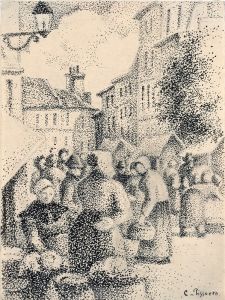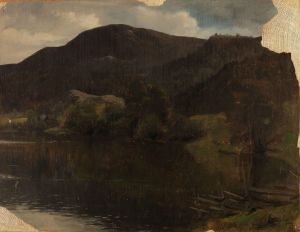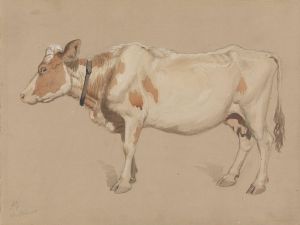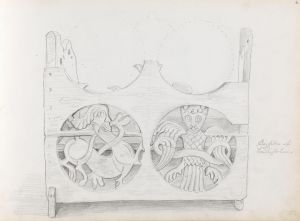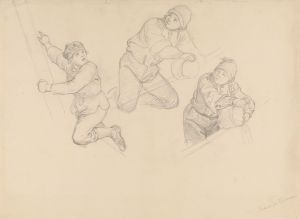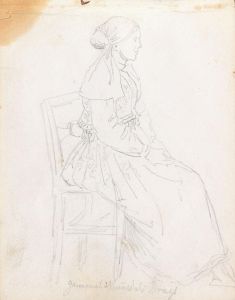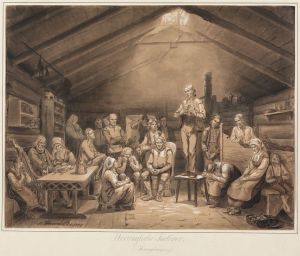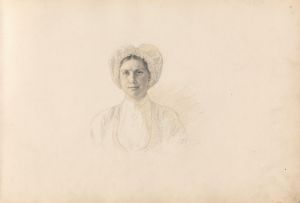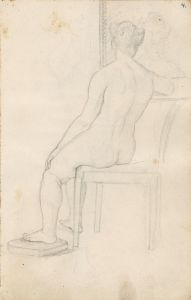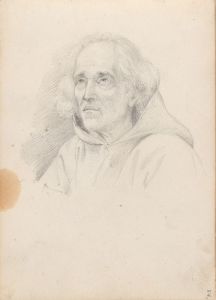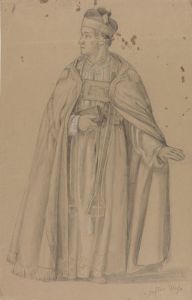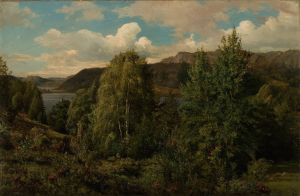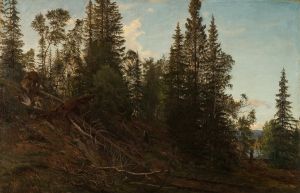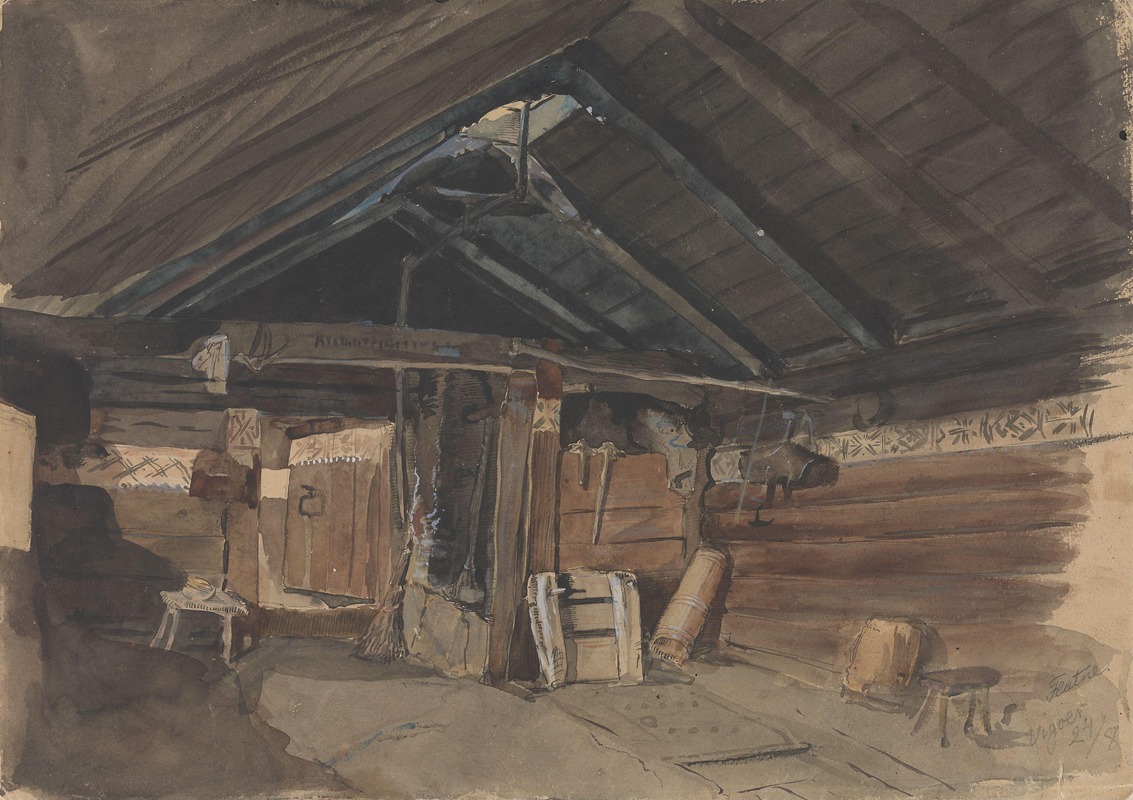
Røkstue, Kvam prestegård, Vikøy
A hand-painted replica of Adolph Tidemand’s masterpiece Røkstue, Kvam prestegård, Vikøy, meticulously crafted by professional artists to capture the true essence of the original. Each piece is created with museum-quality canvas and rare mineral pigments, carefully painted by experienced artists with delicate brushstrokes and rich, layered colors to perfectly recreate the texture of the original artwork. Unlike machine-printed reproductions, this hand-painted version brings the painting to life, infused with the artist’s emotions and skill in every stroke. Whether for personal collection or home decoration, it instantly elevates the artistic atmosphere of any space.
Adolph Tidemand was a prominent Norwegian painter known for his detailed and realistic depictions of Norwegian rural life and folk culture. One of his notable works is "Røkstue, Kvam prestegård, Vikøy," which translates to "Smoke Room, Kvam Parsonage, Vikøy." This painting is an exemplary piece that captures the essence of Norwegian rural interiors and the cultural atmosphere of the time.
Adolph Tidemand was born on August 14, 1814, in Mandal, Norway. He studied art in Copenhagen and later in Düsseldorf, where he became associated with the Düsseldorf school of painting. This school was known for its detailed and realistic style, which Tidemand adopted and further developed in his works. His paintings often focused on Norwegian themes, capturing the everyday life, traditions, and environments of rural Norway.
"Røkstue, Kvam prestegård, Vikøy" is a painting that reflects Tidemand's interest in the traditional Norwegian way of life. The term "røkstue" refers to a type of smoke room, which was a common feature in Norwegian homes, particularly in rural areas. These rooms were used for various purposes, including cooking and heating, and were characterized by their open hearths and the absence of chimneys, allowing smoke to fill the room before escaping through a hole in the roof. This architectural feature was typical in older Norwegian buildings and is an important aspect of the country's cultural heritage.
The setting of the painting, Kvam prestegård in Vikøy, indicates that the scene is located in a parsonage, which is the residence of a parish priest. Parsonages were often central to community life in rural Norway, serving not only as the home of the clergy but also as a gathering place for various social and religious activities. By choosing this setting, Tidemand highlights the intersection of domestic life and community in Norwegian culture.
Tidemand's attention to detail is evident in the way he captures the interior of the smoke room. The painting likely features elements such as wooden furniture, traditional Norwegian textiles, and everyday objects that would have been found in such a setting. These details provide insight into the material culture of the time and reflect Tidemand's dedication to authenticity in his portrayal of Norwegian life.
Throughout his career, Tidemand was celebrated for his ability to convey the spirit and character of Norway through his art. His works, including "Røkstue, Kvam prestegård, Vikøy," are valued not only for their artistic merit but also for their ethnographic significance. They serve as visual documents of a way of life that was rapidly changing during the 19th century due to industrialization and modernization.
Adolph Tidemand's contributions to Norwegian art and culture have left a lasting legacy. His paintings continue to be studied and appreciated for their historical and cultural insights, as well as their technical skill. "Røkstue, Kvam prestegård, Vikøy" remains an important work within his oeuvre, exemplifying his commitment to depicting the authentic Norwegian experience.





